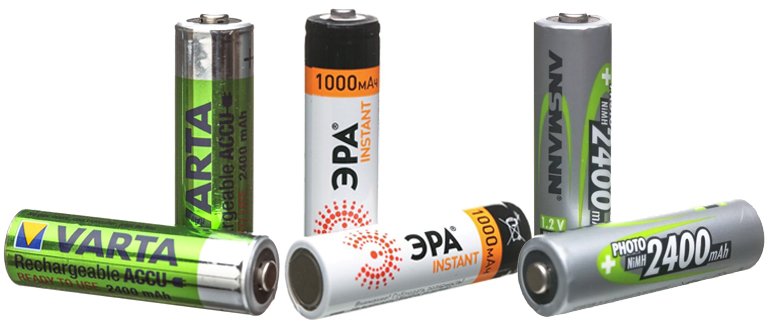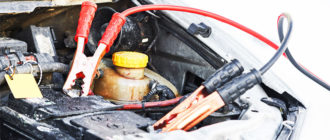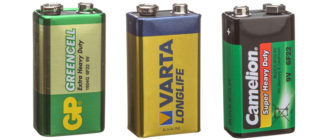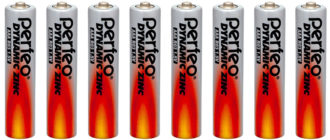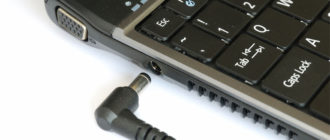AA batteries are the most common and sold along with the little ones. They belong to the type of finger-type batteries, they have been produced since 1907.
Galvanic batteries have characteristics that are optimally suited for many modern devices. This leads to a wide scope, a large selection of domestic and foreign manufacturers.
Content
Types and characteristics of AA batteries
AA-labeled power supplies have different characteristics depending on the type of electrode installed. But they have identical characteristics. First of all, these are sizes.

Finger batteries AA is a cylinder with a diameter of 13.5 to 14.5 millimeters. The length along with the contact ledge (it takes about a quarter of the main diameter) is 50.5 millimeters. The cylindrical part is completely covered with an insulated sheath to prevent possible shorting or corrosion.
The findings are on different sides of the battery. On the positive terminal is a ledge, the height of which is about 1 millimeter. A negative conclusion is a flat or slightly raised surface.
The weight of the power sources is different. Salt weighs about 14-18 grams, alkaline - from 22 to 24 grams, and nickel - 30 grams. The latter option is equipped with a voltage converter, therefore, such batteries can be charged, that is, they perform the functions of batteries and are essentially them.
Li-ion battery (li-ion)
Lithium Li-Ion batteries are in demand and popular. They have a high degree of capacity (from 2000 to 3000 mAh). In this case, the rated voltage is 1.5 v. There are modern options with a voltage of 3.6 v –3.7 v, they can be distinguished by marking 14500 on the battery case.
Nickel-Zinc Battery (Ni-Zn)
Nickel-zinc versions of Ni-Zn have high voltage and energy intensity. In particular, the rated electrical voltage reaches 1.65 v, the capacity - up to 1800 mAh.
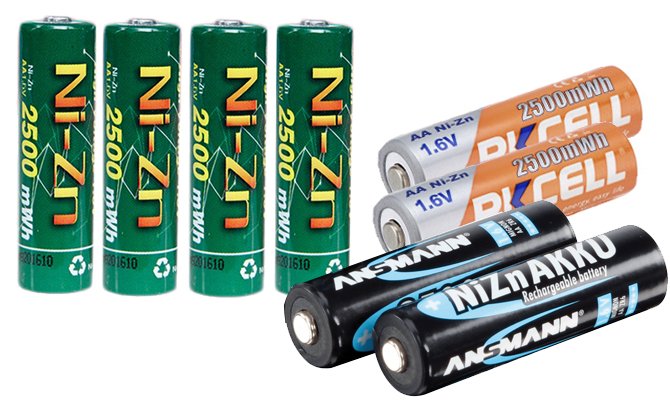
For a chemical current source, zinc is the anode, potassium hydroxide is the electrolyte, and nickel oxide is the cathode. Of the disadvantages of such a rechargeable power source, a small resource is considered (up to 370 cycles).
Nickel Cadmium Battery (NiCd)
Nickel Cadmium Battery Ni-cd is a secondary chemical current source. The anode is cadmium oxide hydrate, the electrolyte is potassium hydroxide with the addition of lithium hydroxide, and the cathode is nickel oxide hydrate with graphite powder. The voltage is 1.25 v, the capacity is small - from 600 to 1500 mAh.
The difference between nickel-cadmium batteries is that they have a large charge cycle— discharge (up to 900 cycles). Modern power supplies of this type can last up to 20 years. Moreover, unlike all other types, they can be stored completely discharged.
Nickel Metal Hydride Battery (NiMh)
Ni-MH battery Ni-MH It is a secondary chemical current source. The cathode is nickel oxide, the anode is a hydrogen metal hydride electrode, and the potassium hydroxide is an electrolyte.
EMF model is 1.25 v. They have wide parameters of the operating temperature range (from -60 to +55 degrees). Nominal capacity is 1400-3000 mah (depending on production conditions).
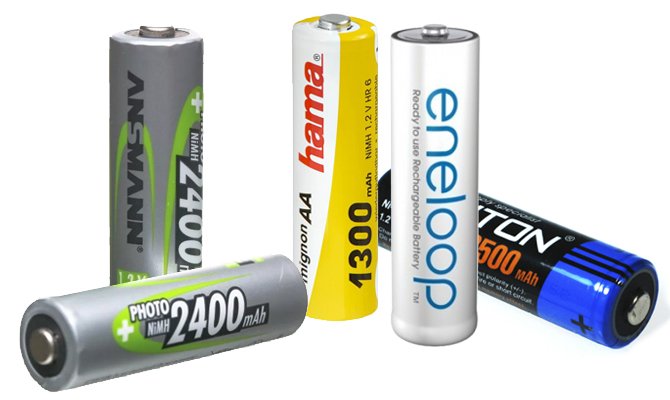
It should be noted that manufacturers indicate that the battery can withstand up to a thousand cycles of charge - discharge, in fact, does not show such parameters. Maximum - up to 800 cycles. Moreover, batteries of this type have a high degree of self-discharge.
Where are AA batteries used?
AA batteries with high capacity are used in devices that require high and constant energy consumption for a short time. Their scope in everyday life:
- players, radios;
- radio-controlled devices;
- cameras and camcorders;
- large hand lights;
- navigators;
- walkie-talkies;
- large children's toys and much more.
AA AA batteries can also be found as a substitute for a galvanic power source in defibrillators, electric vehicles, autonomous power supply systems, lighting equipment, radio equipment, medical equipment and even rocket and space technology.
How to choose a charger
Independent charge channels will allow you to control the process and terminate it yourself without human intervention. Also, plus a charger with separate channels - you can charge multiple batteries at the same time.
An important characteristic of a charger is the charge current:
- with a weak current - sparing mode, there will be no overheating, but charging can take up to a day;
- with an average current - they do not heat up, practically do not affect the service life, charging lasts about 6 hours;
- with a strong current - very fast charging in a few hours, but if the battery is of poor quality, it can quickly become unusable.
Also, attention is paid to the possibility of memorization. Intelligent chargers select an acceptable mode and time.
How to charge AA rechargeable batteries
No special manipulations are worth it. Most memories are powered by AC power, so it is necessary that the voltage is more or less stable.
Batteries can be charged at any stage, but it is advisable to complete the charge cycle to the end (this protects the filling from quick damage). The main thing is not to confuse the polarity.
Popular manufacturers and their features
There is no particular difference between finger-type batteries of various manufacturers. The main thing is to pay attention to the type of power source and the difference in capacity. The devices of Eneloop, Robiton, Varta, GP, Duracell, Xiaomi, Camelion have a good quality-price ratio.
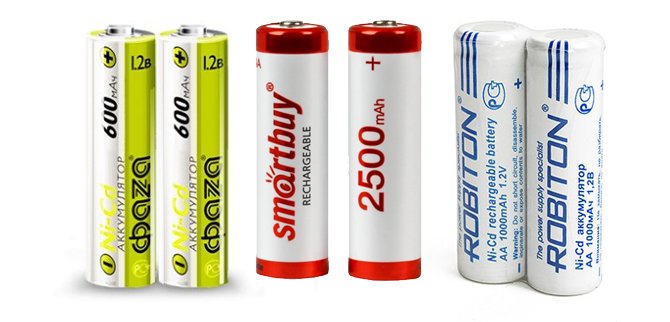
What to look for when choosing
First of all, it is necessary to pay attention to the type and decoding of values. Depending on the device for which AA finger batteries are selected. Also pay attention to:
- current strength;
- voltage (from 1.25 to 3.7 volts);
- capacity;
- power;
- life time;
- charge-discharge cycle;
- temperature range of work.
Properly selected device lasts up to 20 years. Of course, this period depends on the intensity of operation.
Have questions or have something to add? Then write to us about it in the comments, this will make the material more useful, complete and accurate.

